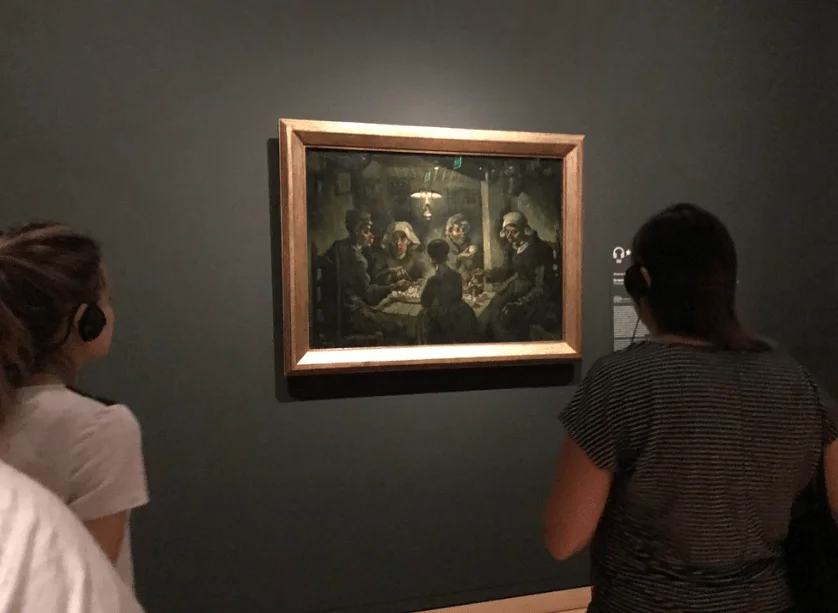It’s one of the most fascinating paintings by a genius artist, and in this post, we’ll check out some facts about The Potato Eaters by Vincent van Gogh.
Vincent van Gogh is one of those artists that can be described as a misunderstood genius. His life was full of trouble and poverty, yet he managed to put out hundreds of absolute masterpieces, most of them in the final years of his life.
What’s the story behind The Potato Eaters? And why and when did he painted it? Let’s check out the details about this famous work!
1. It was painted in the year 1885
Vincent van Gogh started to make the first sketches for the painting in March and the beginning of April of the year 1885. While painting the heads of local farmers, he corresponded frequently with his brother.
Theo was living in Paris at the time and Vincent contacted him all throughout his career, which is the reason that we know a lot about his thought processes for his paintings.
He started painting The Potato Eaters on April 13, 1885 and finished it at the beginning of May of the same year.
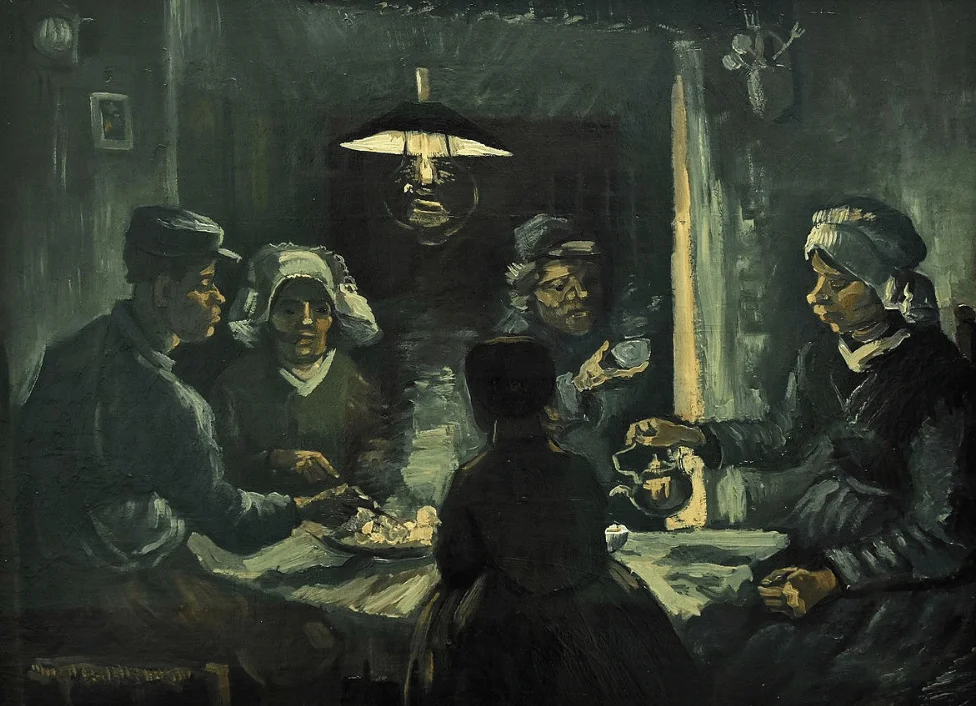
2. Van Gogh was living in Nuenen
When creating the painting, Vincent van Gogh was living with his parents in his hometown of Nuenen in the province of Brabant in the south of the Netherlands.
This rural town made it easy for him to find inspiration and this resulted in over 100 paintings. Many of these were studies of local farmers as they were working in the fields.
3. He met the family he used as a model through a friend
One of his friends in his hometown of Nuenen was an acquaintance of the “de Groot” family which became the model of the Potato Eaters.

This humble family really allowed him to depict the harsh conditions that the working class lived in at the time because honestly, they look a bit rough. This allowed him to further emphasize this.
4. Van Gogh also painted the home of the family
As he painted over 100 paintings while living in Nuenen (which was not even the most prolific period in his career), he used the “de Groot family” in numerous other paintings as well.
The woman depicted in The Potato Eaters was called “Gordina de Groot” and the young woman was the subject of more than 20 of his studies of local farmers.
He also painted the family home of the de Groot’s, something that further emphasizes the poor living conditions these farmers lived in at the time. This 1885 painting is called “The Cottage.”

5. He made several sketches and a lithograph of the work as well
Apart from the dozens of studies he created of farmers during his period in Nuenen, van Gogh also made several sketches of the completed painting. Three of these studies survive today and one of them can be found at the Museum of Modern Art in New York City.
One of the most remarkable facts about the Potato Eaters by Vincent van Gogh is that he also created a lithograph of the painting and sent it to his brother in Paris and one of his friends. He did so in an attempt to get their opinion.
The first time he attempted to create a lithograph was in 1882, just 3 years earlier, and he managed to complete it from memory in about a day.
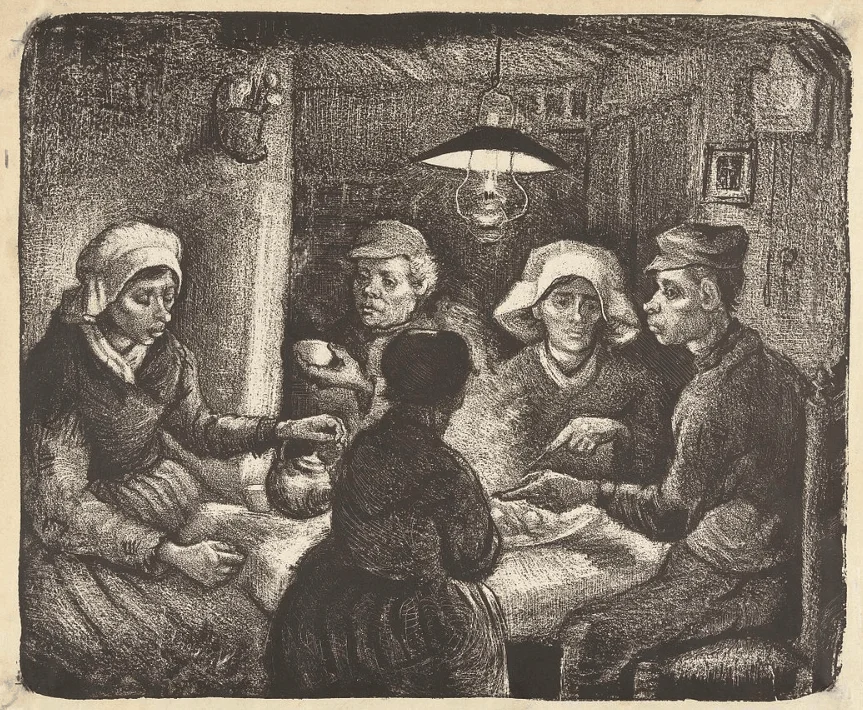
6. He considered it to be one of his best works
When he got feedback about his initial version of The Potato Eaters, it was received with a lot of criticism. His brother Theo flat out told him that he wouldn’t be able to sell the painting in Paris because it was too dark.
His friend Anthon van Rappard, who also received a sketch of the work, even went a step further and directly told Vincent that the work didn’t look good.
Obviously, only later the work would be recognized as a masterpiece since van Gogh deliberately used ugly models to give the viewer the impression that these people literally dug the potatoes that they were eating out of the ground themselves.
For this reason, van Gogh himself considered it to be one of his best works as he wrote in a letter to his sister Willemina two years later in Paris:
What I think about my own work is that the painting of the peasants eating potatoes that I did in Nuenen is after all the best thing I did.
Van Gogh about his painting “The Potato Eaters.”
7. Van Gogh got inspiration from one of his idols
One of the idols of Vincent van Gogh was Belgian painter Charles de Groux, famous for his paintings of the lives of lower-class people and the disadvantaged.
One of the most famous paintings of de Groux is called “The blessing” which depicts a family praying just before eating dinner. It has been linked to the Last Supper Painting by Italian artist Leonardo da Vinci and various religious elements can be found in van Gogh’s paintings as well.
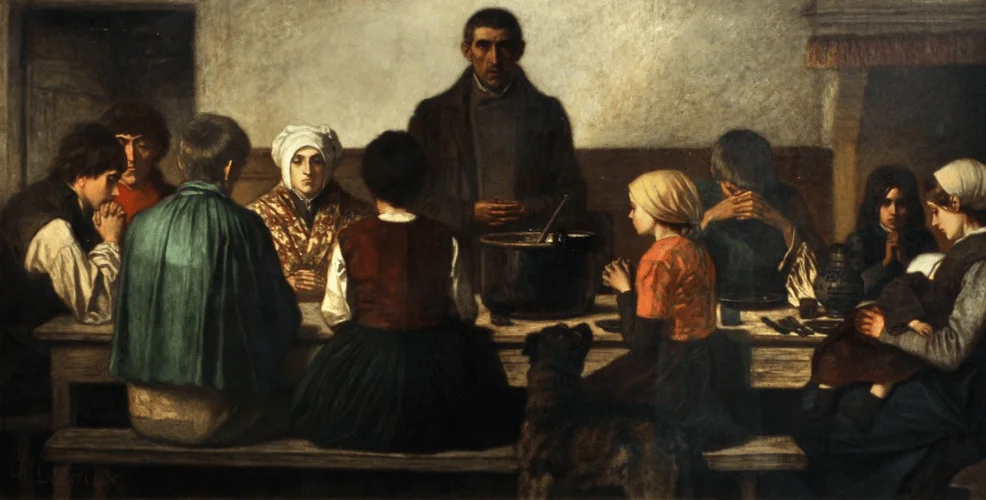
8. This painting shows an even more striking similarity
While the overall concept of The Potato Eaters was inspired by the work of Charles de Groux, the composition of the work was inspired by another painting.
Vincent van Gogh didn’t consider himself to be an impressionist and even mentioned this in a letter to his brother saying:
And from what you said about ‘Impressionism’, I’ve grasped that it’s something different from what I thought it was, but it’s still not entirely clear to me what one should understand by it.
Van Gogh about Impressionism
He went on to mention that he got most of his inspiration from the “The Hague School,” and more particularly a painter named Jozef Israëls.
A famous work by Israëls is called “A Peasant Family at the Table” and the similarity in composition with “The Potato Eaters” is striking. Van Gogh really went a step further though in depicting the family as rough as possible.
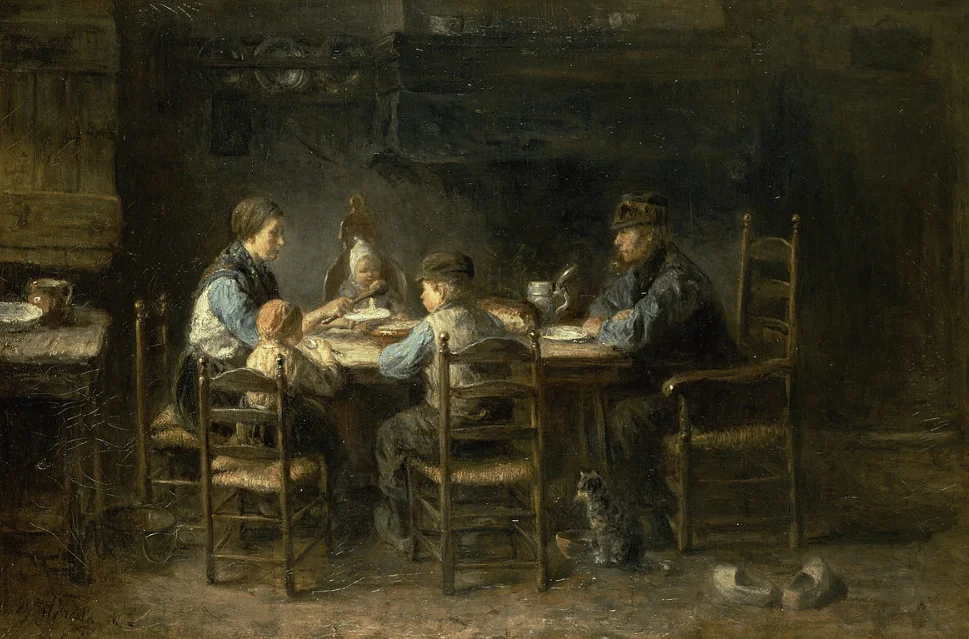
9. He made some remarkable changes to the work later in 1885
Another one of those fascinating facts about the Potato Eaters by Vincent van Gogh is that he wasn’t actually satisfied with his initial work upon completion. He felt as if he didn’t go far enough in depicting the rough conditions of the life of laborers.
Therefore, later in 1885, he made some small changes to further emphasize the rough conditions that these people were living in. He made some changes to the heads of the farmers to make them look like “a really dusty potato.”
10. He tried to identify with the farmer’s family
Vincent van Gogh lived in poverty his entire life as he struggled with a mental illness and the fact that he was unable to sell his paintings. This was in sheer contrast to the way he grew up because he was born into an upper-middle-class family.
Therefore, he really tried to identify with the farmer’s family even though he grew up rather rich.
The word potato in Dutch means “aardappel” which literally translates to “apple from the earth.” The most important part of the painting was to convey the feeling that the people eating the potatoes really dug them out from the ground themselves.
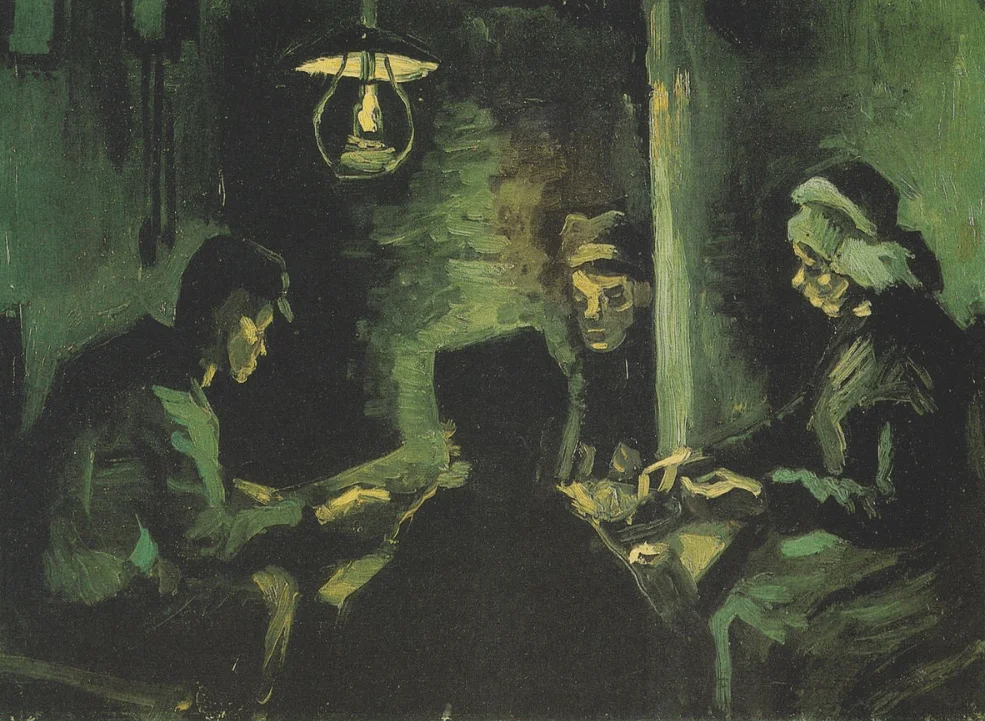
11. It’s located at the Van Gogh Museum in Amsterdam
So where can we find the original painting “The Potato Eaters?”
If you want to admire the 82 × 114 centimeters (32.3 × 44.9 inches) oil on canvas painting, you will have to visit the “Van Gogh Museum” in Amsterdam.
The painting was owned by the van Gogh family from Vincent’s death until it was donated to the “Van Gogh Foundation” in 1962. It has been on permanent loan to the museum ever since.
12. The Potato Eaters suffered the same fate as the Mona Lisa
Did you know that the Mona Lisa Painting was once stolen from the Louvre Museum, only to be returned a few years later?
Well, the same fate happened to The Potato Eaters by Vincent van Gogh, because on April 14, 1991, the painting was actually stolen from the museum.
Luckily, the thieves had a flat tire with their car and had to flee the scene so the painting, along with 20 other masterpieces by van Gogh, could easily be recovered.
2 years earlier, one of the studies of The Potato eaters held at the Kröller-Müller Museum was stolen as well, only to be retrieved a few years later.
Luckily, crime doesn’t pay and all paintings have been returned without any ransom being paid, and here for art enthusiasts to enjoy!
